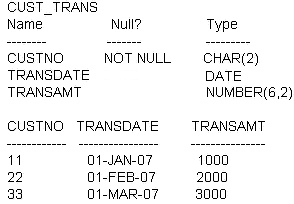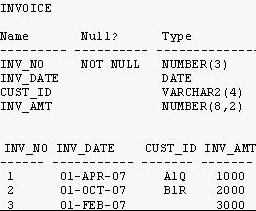

Evaluate the SQL statement:
TRUNCATE TABLE DEPT;
Which three are true about the SQL statement? (Choose three.)
Correct Answer:
ADF
🗳️
A: The TRUNCATE TABLE Statement releases storage space used by the table,
D: Can not rollback the deletion of rows after the statement executes,
F: You must be the owner of the table or have DELETE ANY TABLE system privilege to truncate the DEPT table.
Incorrect answer:
Cis not true -
Dis not true -
Eis not true -
Refer: Introduction to Oracle9i: SQL, Oracle University Study Guide, 8-18
You need to design a student registration database that contains several tables storing academic information.
The STUDENTS table stores information about a student. The STUDENT_GRADES table stores information about the student's grades. Both of the tables have a column named STUDENT_ID. The STUDENT_ID column in the STUDENTS table is a primary key.
You need to create a foreign key on the STUDENT_ID column of the STUDENT_GRADES table that points to the STUDENT_ID column of the STUDENTS table.
Which statement creates the foreign key?
Correct Answer:
D
🗳️
CONSTRAINT name FOREIGN KEY (column_name) REFERENCES table_name (column_name);
Incorrect answer:
Ainvalid syntax -
Binvalid syntax -
Cinvalid syntax -
Refer: Introduction to Oracle9i: SQL, Oracle University Study Guide, 10-14
Here is the structure and data of the CUST_TRANS table:
Exhibit:
CUST_TRANS -
Name Null? Type
-------------- ----------------- ------------------
CUSTNO NOT NULL CHAR (2)
TRANSDATE DATE
TRANSAMT NUMBER (6, 2)
CUSTNO TRANSDATE TRANSAMT
------------- ----------------------- -----------------------
11 01-JAN-07 1000
22 01-FEB-07 2000
33 01-MAR-07 3000
Dates are stored in the default date format dd-mm-rr in the CUST_TRANS table.
Which three SQL statements would execute successfully? (Choose three.)
Correct Answer:
ACD
🗳️
See the Exhibit and examine the structure and data in the INVOICE table:
Exhibit:
Which two SQL statements would executes successfully? (Choose two.)
Correct Answer:
AD
🗳️
Which three statements are true regarding sub queries? (Choose three.)
Correct Answer:
ABC
🗳️